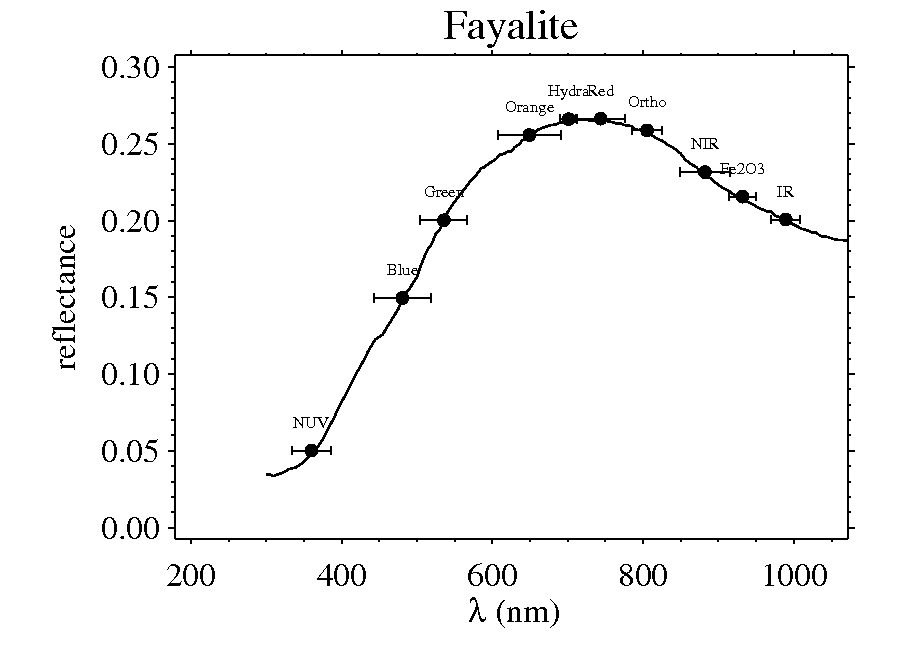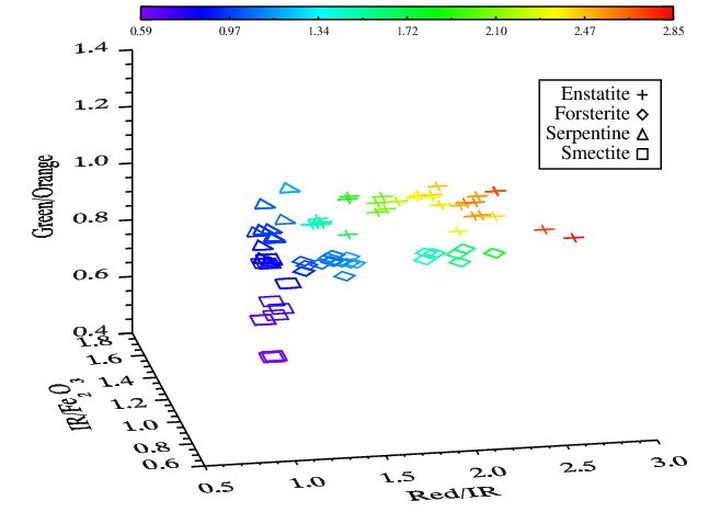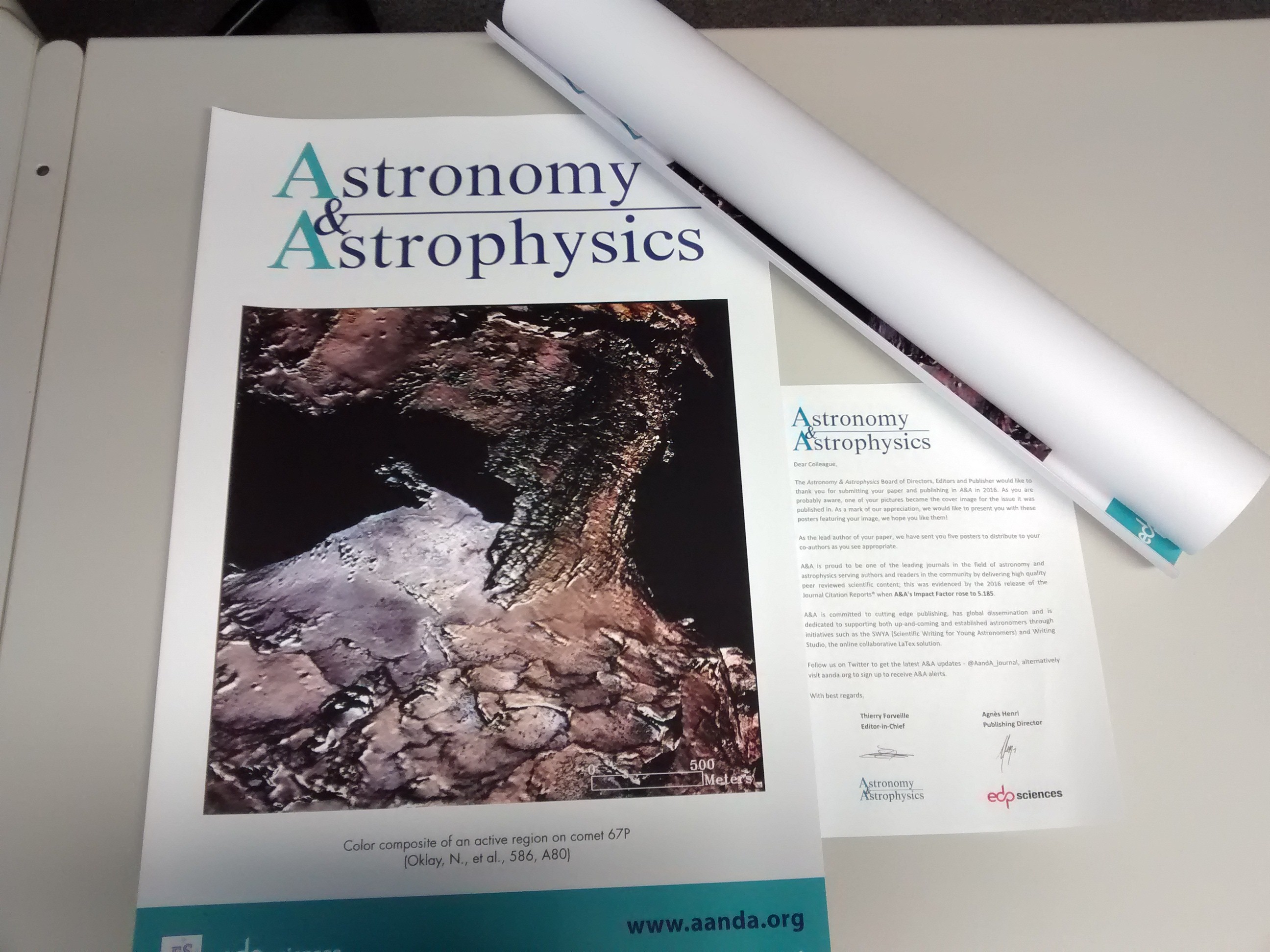Nilda Oklay
Main menu:
Multispectral Imaging
Work
|
Using images taken via different filters of OSIRIS NAC (narrow angle camera), we are able to detect multispectral variation of comet Churyumov-Gerasimenko's surface, characterize spectrally different surface units and investigate temporal variation of the surface features. Moreover, we are able to observe compositional changes due to its activity. Therefore, I'm investigating spectral techniques on the detection and separation of some minerals, which we expect to find on comets.
Cometary minerals are mainly Mg-rich silicates, mostly forsterite (olivine) and enstatite (pyroxene). Some hydrated/anhydrous silicates, sulfides, hydroxides and carbonates are selected according to the findings of Stardust mission and calibration materials of both GIADA and COSIMA intruments on board Rosetta. |



|
|